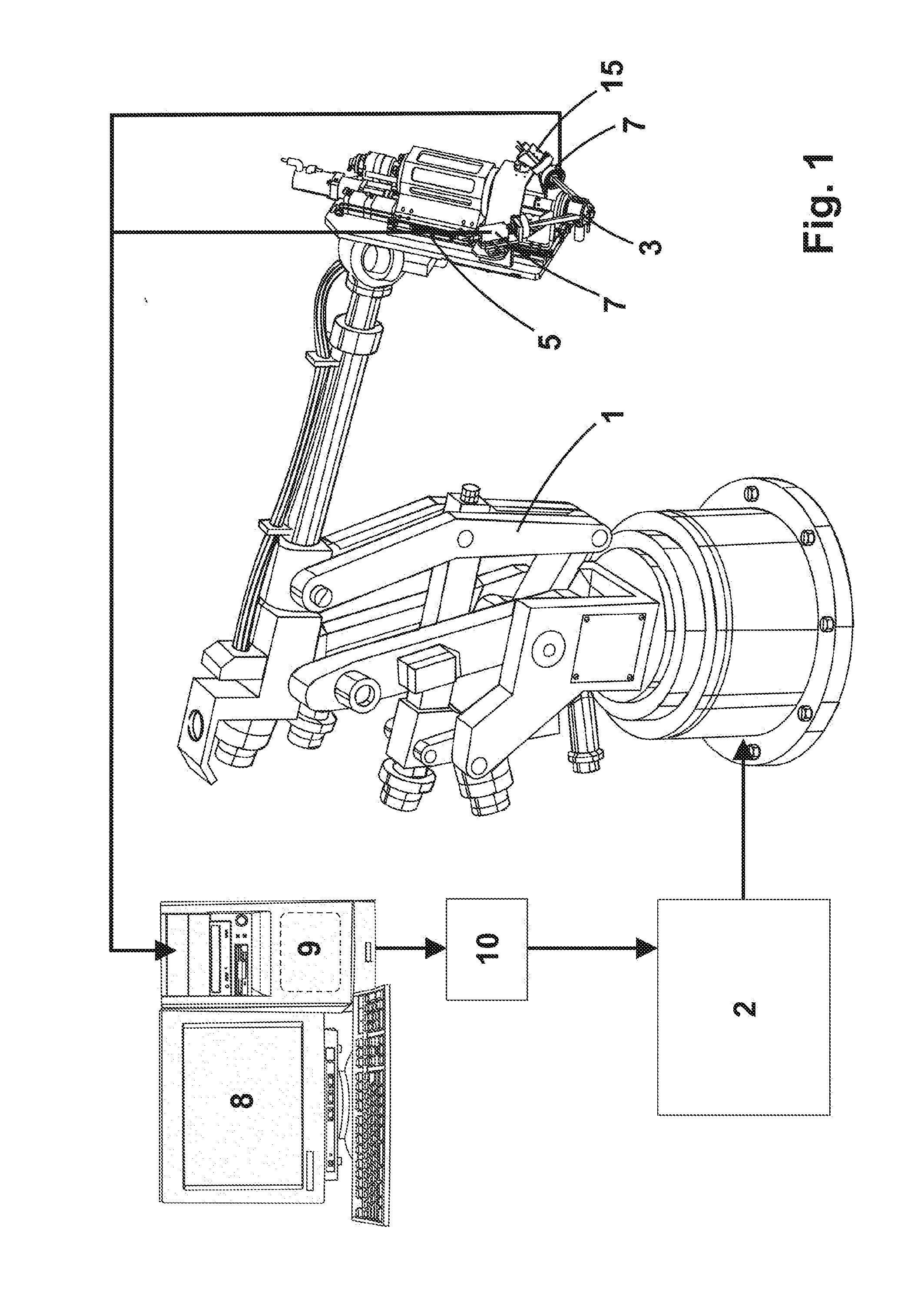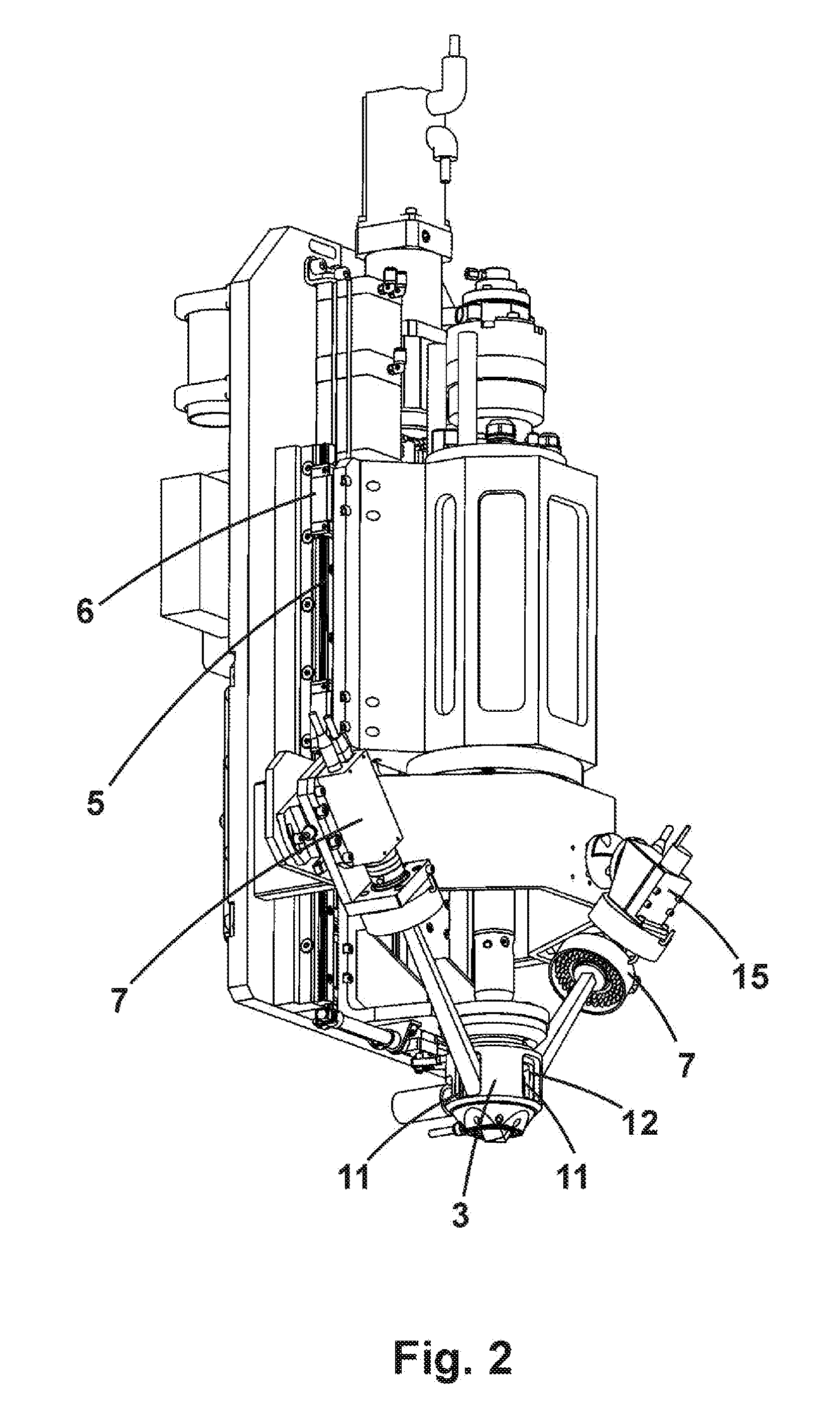Head and automated mechanized method with vision
- Summary
- Abstract
- Description
- Claims
- Application Information
AI Technical Summary
Benefits of technology
Problems solved by technology
Method used
Image
Examples
Embodiment Construction
[0066]The automated machining head with vision and procedure that is the subject matter of this invention is associated with a robot arm (1) to perform various machining tasks, especially drilling and riveting, controlled by a robot controller module (2), and basically comprises, as can be seen in the drawing attached, a pressure foot (3), encasing the machining tool (4), associated with a vertical movement device (5) provided with mechanical locking (6), 3-D type vision equipment provided with at least two video cameras (7), connected to a computer (8) provided with specific software (9), and a communications module (10). The communications module (10) may be either a specific hardware device or a part of the specific software (9).
[0067]It is envisaged that the vision equipment may optionally comprise a laser device (15) which projects a cross-shaped beam inside the pressure foot (3). The projection of this cross onto the workpiece to be drilled is used by the artificial vision cam...
PUM
| Property | Measurement | Unit |
|---|---|---|
| Pressure | aaaaa | aaaaa |
| Distance | aaaaa | aaaaa |
Abstract
Description
Claims
Application Information
 Login to View More
Login to View More - R&D
- Intellectual Property
- Life Sciences
- Materials
- Tech Scout
- Unparalleled Data Quality
- Higher Quality Content
- 60% Fewer Hallucinations
Browse by: Latest US Patents, China's latest patents, Technical Efficacy Thesaurus, Application Domain, Technology Topic, Popular Technical Reports.
© 2025 PatSnap. All rights reserved.Legal|Privacy policy|Modern Slavery Act Transparency Statement|Sitemap|About US| Contact US: help@patsnap.com



